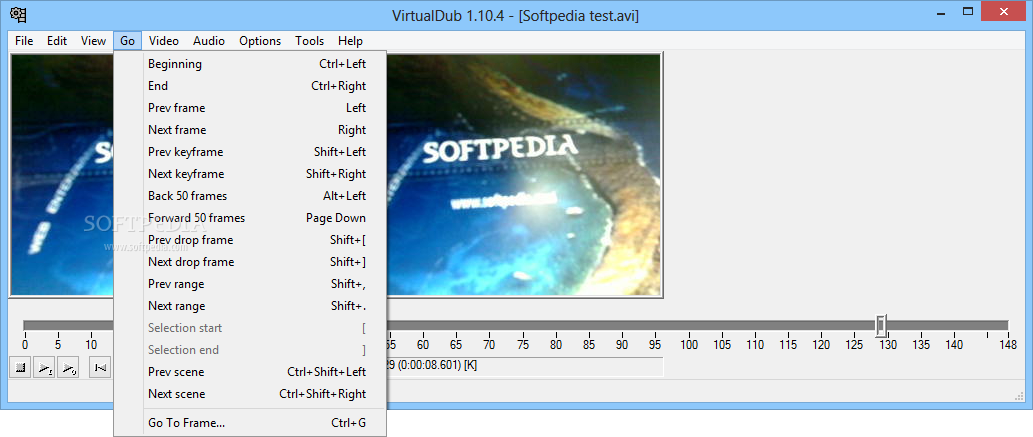
Integrated MPEG-1 and Motion-JPEG decoders.Reads and writes AVI2 (OpenDML) and multi-segment AVI clips.Clean interface layout: caption, menu bar, info panel, status bar.Keyboard and mouse shortcuts for faster operation.Access hidden video formats your capture card may support but not have a setting for, such as 352x480.Verbose monitoring, including compression levels, CPU usage, and free disk space.Real-time downsizing, noise reduction, and field swapping.Integrated volume meter and histogram for input level monitoring.Create AVI2 (OpenDML) files to break the AVI 2GB barrier and multiple files to break the FAT32 4GB limit.Optimized disk access for more consistent hard disk usage.Don't settle for 29 or 30 when you want 29.97. VirtualDub is mainly geared toward processing AVI files, although it can read (not write) MPEG-1 and also handle sets of BMP images. It has batch-processing capabilities for processing large numbers of files and can be extended with third-party video filters. It lacks the editing power of a general-purpose editor such as Adobe Premiere, but is streamlined for fast linear operations over video. Yet, this has many other functions which cost you simplicity.VirtualDub is a video capture/processing utility for Windows platforms licensed under the GNU General Public License (GPL). You could use Handbrake, but the workflow is not user-friendly. No, not for AVI, and other supported file types. The program is not currently available for Mac OS or Linux. VirtualDub is available for Windows 98, and later.

To avoid issues, make sure you know what file type you are using, and make sure it’s compatible. One potential downside is that some of the more modern file types do not have plugins available. It’s easy to swap out an MP3, and replace it with a WAV, for example. It can complete the task non-destructively, without encoding, so is quick.

VirtualDub is excellent when it comes to extracting audio. Once you get the hang of it, you will find the workflow is perfect for the task in hand. It will take some time to get used to as on first glance, and it can seem confusing. The interface and the workflow make editing easy, and fast. There are some import plugins, and external encoders you can take advantage of. Although AVI is the whole of VirtualDub, it is still possible to import other file types as needed. This isn’t a big issue, as VirtualDub still boasts many beneficial features. When you open the program, you can see that the interface is a little old fashioned, and could do with a revamp. The program interface within VirtualDub is clean, and the workflow is efficient.


 0 kommentar(er)
0 kommentar(er)
